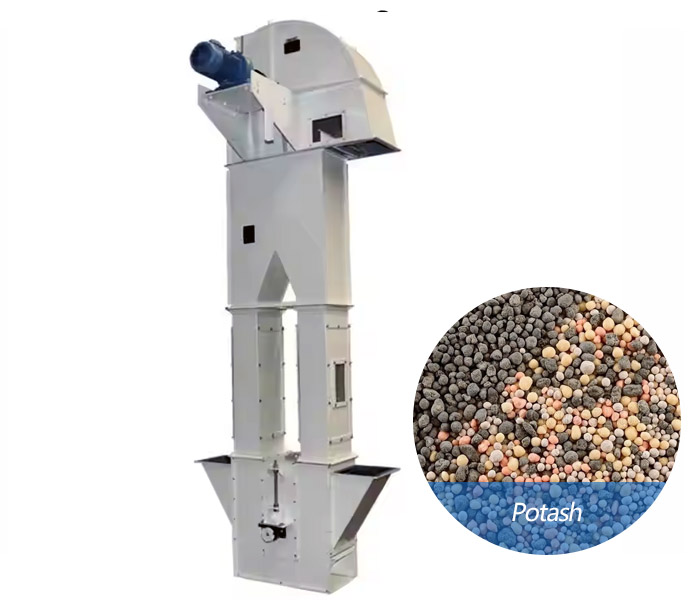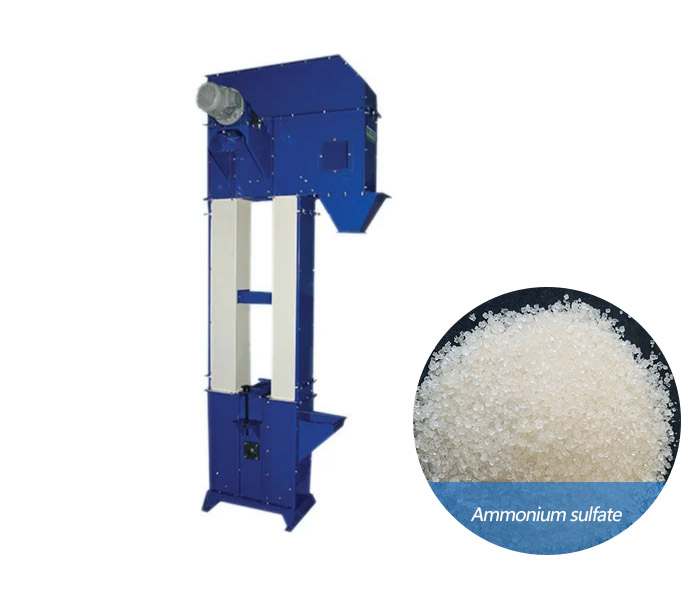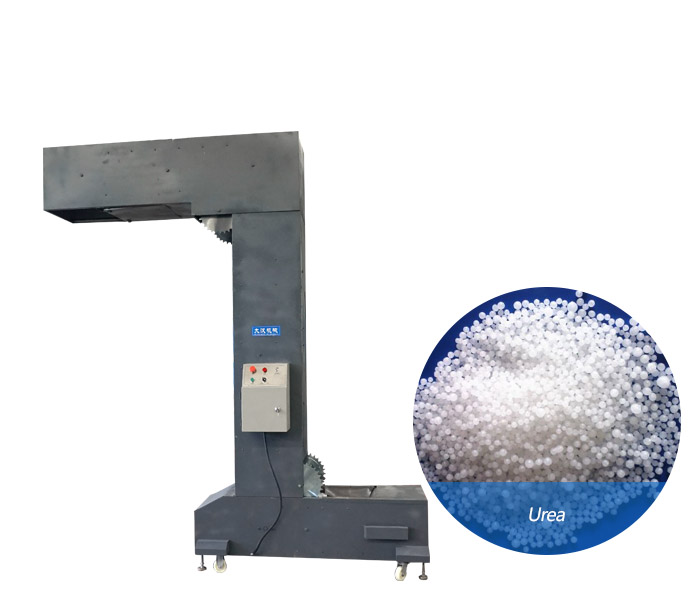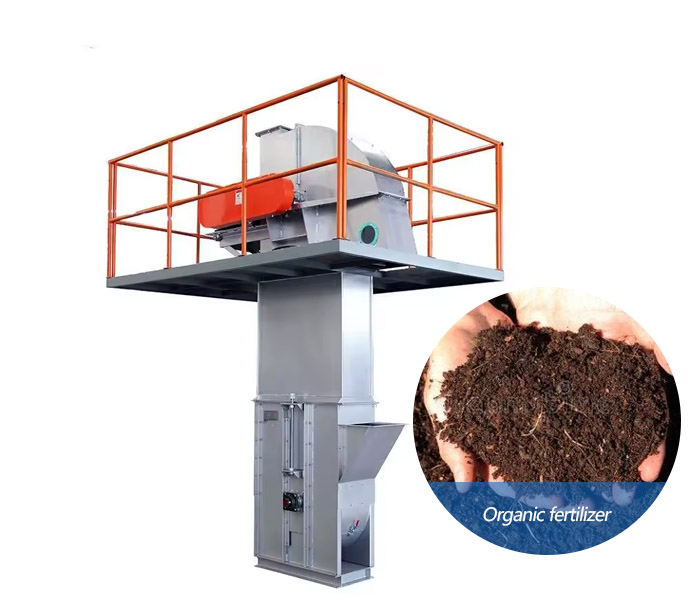
Organic Fertilizer Conveying Bucket Elevator
Equipment used to lift organic fertilizer from a low place to a high place vertically or obliquely; suitable for organic fertilizer production, processing and packaging.
| Lifting height | 5-80 meters, customized according to specific needs. |
| Conveying capacity | 5-50t/h |
| Hopper capacity | 5-20L |
| Motor power | 2.2-7.5 kW |
| Material | carbon steel, stainless steel, etc. |
| Applicable materials | organic fertilizer, chemical fertilizer, compound fertilizer, feed and other abrasive, grinding and grinding powders, granules and small pieces |
What is Organic fertilizer conveying bucket elevator?
Organic Fertilizer Conveying Bucket Elevator is a mechanical device specially used for conveying organic fertilizer vertically or obliquely. It lifts organic fertilizer from a low place to a high place through a bucket fixed on a belt or chain, and is widely used in the production, processing, packaging and storage of organic fertilizer.
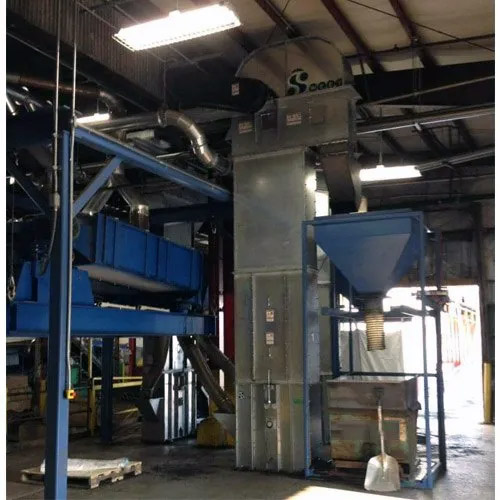
Organic Fertilizer usually includes compost, biological organic fertilizer, animal manure, etc. These materials are sticky, corrosive and have a certain humidity, so special conveying equipment is required. Bucket elevator is an ideal choice in the organic fertilizer industry because of its high efficiency, stability and strong adaptability.
Why choose bucket elevator to transport organic fertilizer?
Vertical lifting, saving space: Organic fertilizer production often requires materials to be transported from low to high for subsequent processing. Bucket elevators are good at vertical transportation, which can greatly save site occupation and improve production efficiency.
Sealed transportation, reducing pollution: Organic fertilizer is prone to dust and odor during transportation. Bucket elevators are mostly closed structures, which can effectively reduce material loss and dust flying, improve the working environment, and meet environmental protection requirements.
Stable and reliable, large conveying capacity: Organic fertilizer production lines require stable and reliable equipment to ensure continuous production. Bucket elevators have a simple structure, stable operation, can meet large-scale transportation needs, and are relatively easy to maintain.
What are the applications of Organic fertilizer conveying bucket elevator?
Organic fertilizer conveying bucket elevator has a wide range of applications:

1. Organic fertilizer production: used to convey fermented organic fertilizer from the fermentation area to drying, screening or packaging equipment.
2. Composting plant: used to lift compost materials to compost turning machine or sorting equipment.
3. Agricultural cooperatives: used for storage and distribution of organic fertilizers.
4. Biomass energy plant: used to convey organic waste to fermentation tanks or processing equipment.
5 Horticulture and gardening: used for distribution and application of organic fertilizers.
How does the organic fertilizer conveying bucket elevator work?
When the bucket elevator is working, organic fertilizer enters the bottom of the elevator through the feed port; after the bucket is loaded with materials at the bottom, it is lifted upward with the movement of the belt or chain; when the bucket reaches the top, the materials are discharged from the discharge port by centrifugal force or gravity; the empty bucket then returns to the bottom and the above process is repeated.

Organic fertilizer conveying bucket elevator parameters
| Model | Max feed size(mm) | Capacity(T/H) | Lifting speed(m/s) | Belt width(mm) | Lifting height(m) |
| TD160 | 25 | 5.4-16 | 1.4 | 200 | <40 |
| TD250 | 35 | 12-35 | 1.6 | 300 | |
| TD315 | 45 | 17-40 | 1.6 | 400 | |
| TD400 | 55 | 24-66 | 1.8 | 500 | |
| TD500 | 60 | 38-92 | 1.8 | 600 | |
| TD600 | 70 | 85-142 | 2 | 700 |
What are the structures of organic fertilizer conveying bucket elevator?
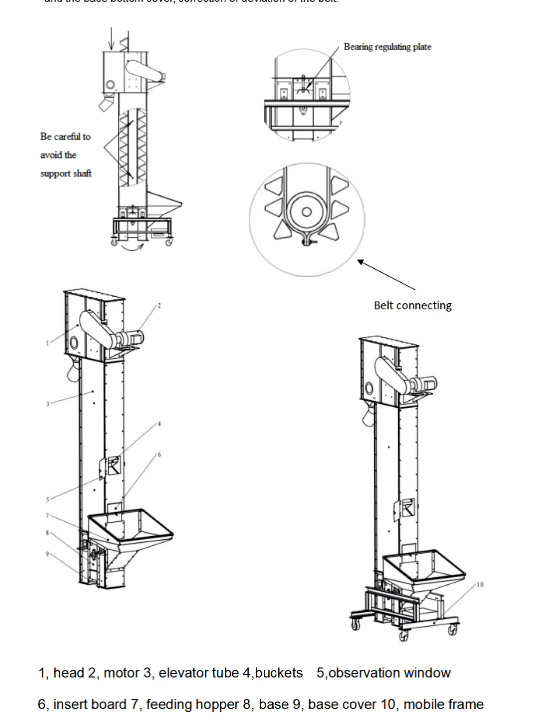
Hopper: a container for carrying organic fertilizer, usually made of wear-resistant and corrosion-resistant materials.
Belt or chain: connects and drives the hopper to ensure continuous operation.
Drive device: includes a motor and a reducer to provide power.
Shell: a closed structure to prevent dust from spilling and material from falling.
Feed port and discharge port: used for material input and output respectively.
Tensioning device: adjusts the tightness of the belt or chain to ensure stable operation.
Organic fertilizer conveying bucket elevator solution
| Customer case | Application scenario | Lifting amount | Lifting height |
| An organic fertilizer production plant in Egypt | Used to transport fermented organic fertilizer from the fermentation area to the drying equipment, significantly improving production efficiency and reducing labor costs. | 15 tons/hour | 12 meters |
| An Indonesian agricultural cooperative | Used for storage and distribution of organic fertilizers, the equipment has high durability and low maintenance costs, and has been highly praised by customers. | 30 tons/hour | 25 meters |
| A composting plant in Hebei | Used to lift composting materials to the compost turning machine, the equipment operates stably and has strong adaptability, meeting the high-efficiency requirements of composting treatment. | 8 tons/hour | 12 meters |

How to select organic fertilizer conveying bucket elevator?
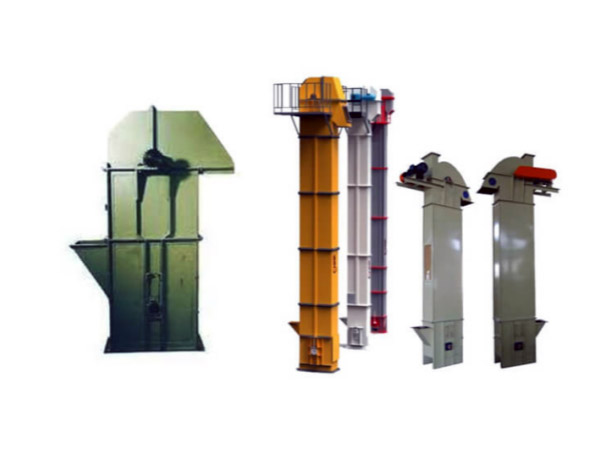
1. Clarify the material characteristics
The characteristics of organic fertilizer directly affect the selection of bucket elevators, and the following aspects need to be focused on:
Form: Organic fertilizer may be powdery, granular or blocky, and different forms have different requirements for bucket design and conveying methods.
Humidity: Organic fertilizer usually contains a certain amount of moisture, so anti-sticking and anti-blocking designs need to be selected.
Corrosiveness: Organic fertilizer may contain acidic or alkaline components, so corrosion-resistant materials (such as stainless steel) need to be selected.
Viscosity: Some organic fertilizers are highly viscous, so easy-to-clean buckets and conveyor belts need to be selected.
2. Determine the conveying requirements
Conveying volume: Determine the amount of organic fertilizer that needs to be transported per hour (unit: tons/hour) according to the production scale, with a maximum transport of 200 tons/hour.
Lifting height: Determine the height (in meters) to which the material needs to be lifted based on the site layout. The maximum height that can be lifted is 60 meters.
Conveying direction: Choose vertical or inclined lifting, and inclined lifting needs to consider angles and stability.
3. Choose the right type of bucket elevator
According to the characteristics and transportation requirements of organic fertilizers, choose the following types of bucket elevators:
Centrifugal unloading type: suitable for powdered or small-particle organic fertilizers, with fast conveying speed and high efficiency.
Gravity unloading type: suitable for blocky or sticky organic fertilizers, with more thorough unloading and less residue.
Continuous type: suitable for scenes with high conveying volume and large lifting height, with stable operation.
Intermittent type: suitable for small-scale production or scenes requiring precise control.

